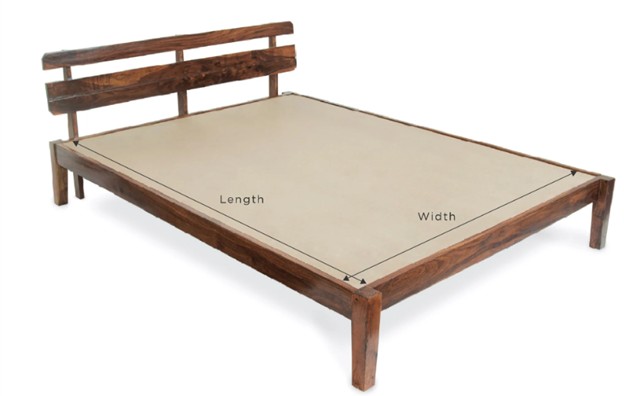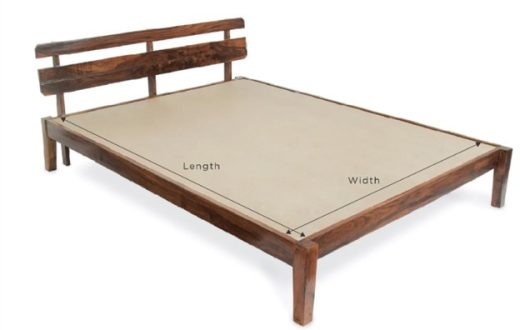Understanding bed dimensions guide, Bedroom size advice, Home space layout tips
Understanding bed dimensions
8 August 2024
The Intersection of Architecture and Comfort: Understanding Bed Dimensions Advice Guide
When designing a bedroom, the choice of bed dimensions is pivotal. The size of your bed not only dictates the room’s overall aesthetic but also influences your comfort and sleep quality. To create a harmonious balance between architecture and comfort, it’s essential to delve into the specifics of understanding bed dimensions.
The Role of Bed Dimensions in Bedroom Design
- Architectural Considerations
Architectural planning of a bedroom begins with understanding the spatial dynamics. The bed, being the focal point, sets the stage for the rest of the room’s layout. A larger bed might offer more comfort but can dominate the space, making the room feel cramped. Conversely, a smaller bed might free up space but could compromise on sleeping comfort. Therefore, choosing the right bed size involves a trade-off between comfort and spatial aesthetics.
- Functional Space Management
The bed size affects not only sleeping space but also the functional area around it. For instance, a queen size bed typically measures 60 inches by 80 inches, while a king size bed measures 76 inches by 80 inches. The extra width of a king bed requires a larger room to maintain functionality and ease of movement. Adequate space around the bed ensures that you can access bedside tables, wardrobes, and other furniture without hindrance.
- Visual Balance
From an architectural perspective, visual balance is crucial. A bed that’s proportionate to the room size enhances the room’s aesthetics. A small bed in a large room might look out of place, while an oversized bed in a small room can overwhelm the space. Striking a balance ensures the room looks and feels well-proportioned.
Comfort and Bed Dimensions
- Sleeping Comfort
The primary function of a bed is to provide a comfortable sleeping surface. The dimensions of the bed should accommodate your sleeping habits and body size. For couples, a queen or king size bed is often ideal, providing enough space for both to sleep comfortably without disturbing each other. Single sleepers might prefer a twin or full-size bed, depending on their personal space requirements.
- Mattress Support
Different bed dimensions come with varying levels of mattress support. Larger beds like queen and king sizes often come with more advanced support systems, enhancing comfort. The right mattress, combined with the appropriate bed size, ensures proper spinal alignment and reduces the risk of sleep-related discomforts.
- Customization Options
Modern architecture and design trends emphasize customization. Adjustable beds, for instance, offer variable dimensions and can be tailored to individual comfort needs. This flexibility allows for a personalized approach to bedroom design, catering to specific comfort requirements while maintaining aesthetic appeal.
Practical Considerations in Choosing Bed Dimensions
- Room Size and Layout
The dimensions of the room are the first consideration when choosing a bed. Measure the room and determine the optimal bed size that allows for other essential furniture pieces and ensures ease of movement. Consider the placement of windows, doors, and other architectural features that might influence the bed’s positioning.
- Intended Use
The purpose of the bedroom also affects the choice of bed dimensions. A master bedroom might benefit from a larger bed, offering luxury and comfort. A guest room, on the other hand, might require a smaller bed to accommodate additional furniture and cater to various guests.
- Future Needs
Consider potential future needs when selecting bed dimensions. For instance, a growing family might require a larger bed in the future. Investing in a versatile bed size now can save costs and hassle later.
Enhancing Bedroom Aesthetics with the Right Bed Dimensions
- Creating a Focal Point
The bed is often the central element in a bedroom. Choosing the right size helps create a focal point that draws the eye and enhances the room’s overall design. Complement the bed with appropriate bedding, headboards, and decorative elements to create a cohesive look.
- Color and Texture Coordination
The bed size can influence the choice of colors and textures in the room. A larger bed might require lighter colors to prevent the room from feeling too heavy, while a smaller bed allows for bolder, darker hues. Textures also play a role in creating a comfortable and visually appealing space.
- Lighting Considerations
Lighting is a key element in bedroom design. The bed size can affect how light is distributed in the room. Ensure adequate lighting for reading and other activities while maintaining a cozy ambiance. Bedside lamps, overhead fixtures, and natural light sources should all complement the bed’s size and placement.
Bedroom Size Conclusion
Understanding bed dimensions is essential in creating a bedroom that balances architecture and comfort. By considering factors such as room size, functional needs, and aesthetic preferences, you can select the perfect bed size that enhances both the visual appeal and comfort of your living space. The right bed not only transforms your bedroom into a sanctuary of relaxation but also aligns with architectural principles to create a harmonious and functional environment.
Comments on this guide to Understanding bed dimensions article are welcome.
Home Bedrooms and Beds
How to improve your bedroom design
2 bed flats to rent in Aberdeen
Property Design
Modern Property Designs – residential architectural selection below:
Edinburgh home demonstrator Granton homes
How to transform your bathroom
Comments / photos for the Understanding bed dimensions advice page welcome.





